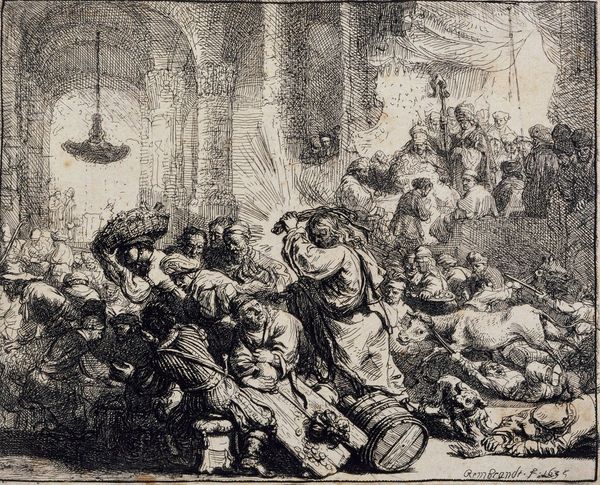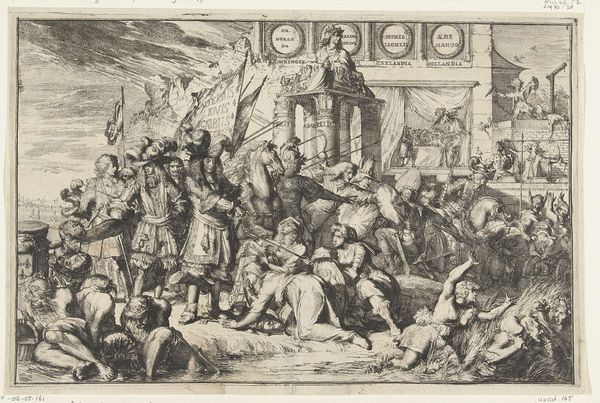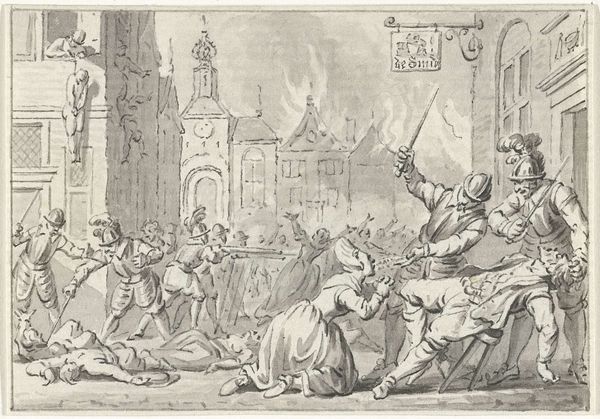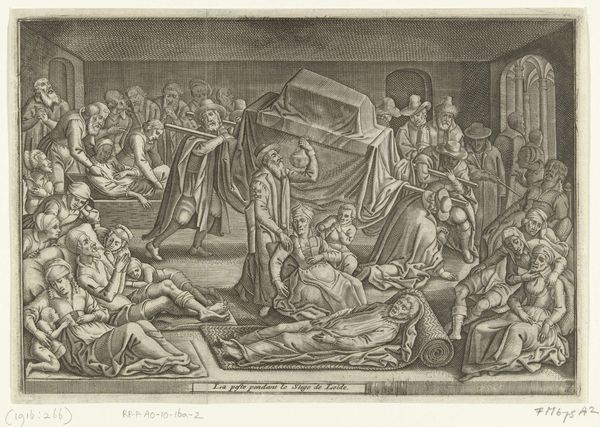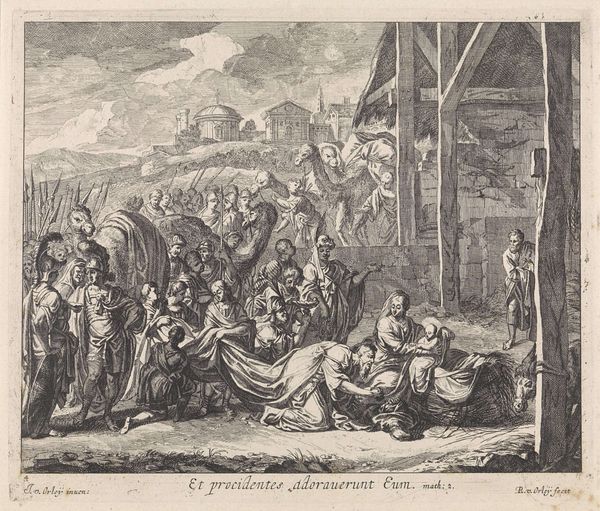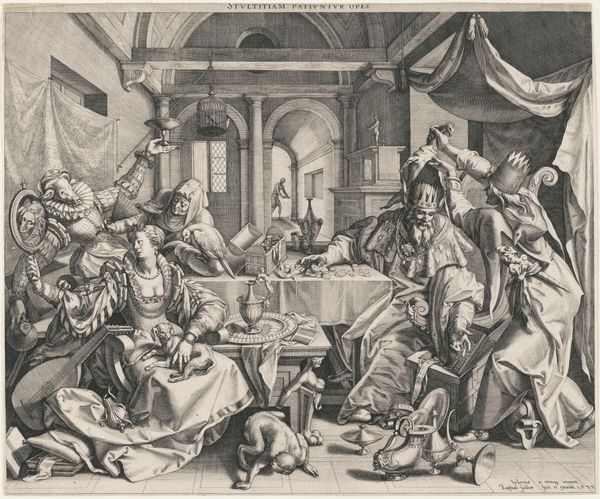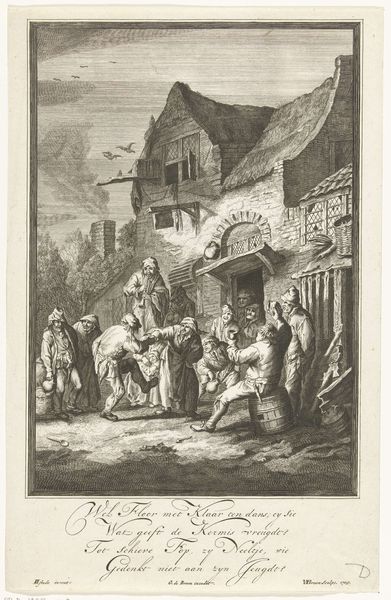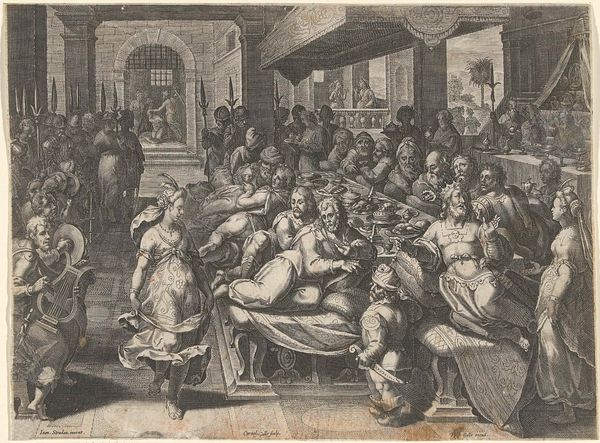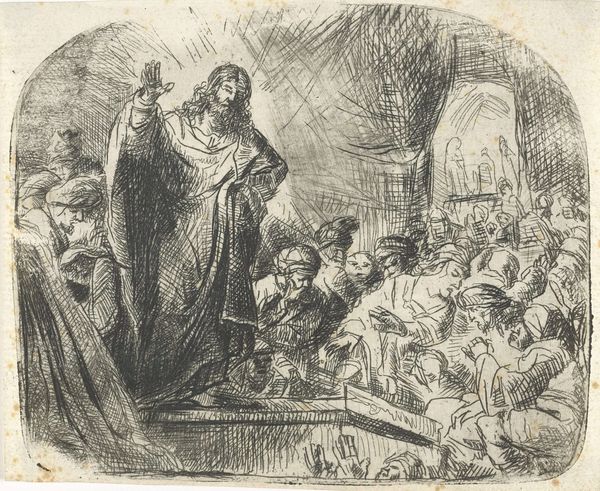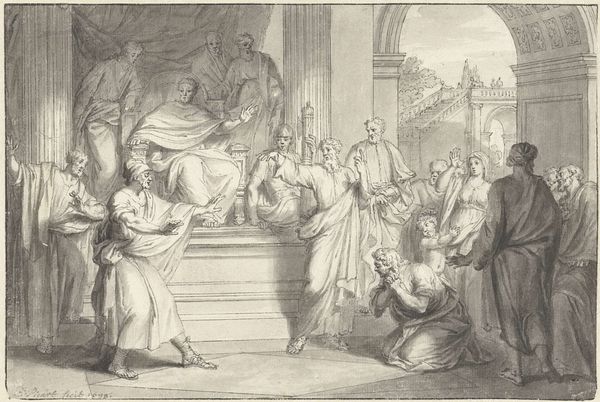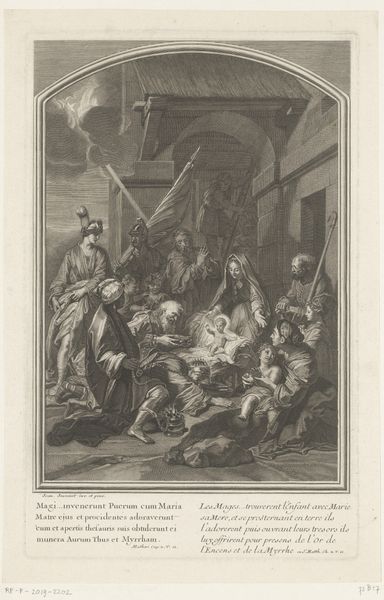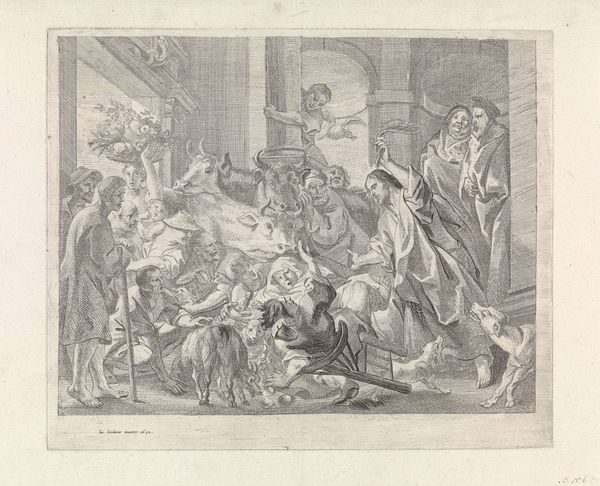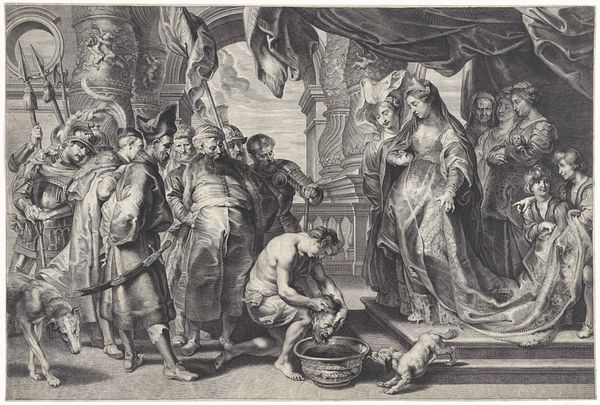
drawing, ink, pen
#
drawing
#
narrative-art
#
baroque
#
pen sketch
#
pencil sketch
#
figuration
#
ink
#
pen-ink sketch
#
sketchbook drawing
#
pen
#
genre-painting
#
history-painting
Dimensions: height 154 mm, width 175 mm
Copyright: Rijks Museum: Open Domain
Curator: Here we have a drawing entitled "Christ driving the money changers from the Temple," dating back to 1660, created by Moses ter Borch. It’s currently held in the collection of the Rijksmuseum. Editor: Chaos! That's the first impression. The frantic lines really convey a sense of disruption and energy. Curator: Precisely. The composition certainly amplifies that reading. Note the dynamic interplay between light and shadow, how the artist uses stark contrasts to direct our attention to Christ at the center of this maelstrom. Editor: The central figure wields what looks to be a whip of cords. Historically, that whip isn't just about violence; it represents divine authority and purification. Ter Borch uses this to underscore Christ’s role as a righteous cleanser, disrupting corrupt religious practices. Curator: Indeed, the line work reinforces that meaning through contrast; look how delicate the marks are overall, despite the violent theme. He seems almost more interested in rendering emotion than specific objects. Editor: I see visual references to contemporary societal problems, like the opulence of some church leaders, who have detached themselves from serving the working population and are becoming part of a larger issue. Curator: Absolutely. The drawing shows echoes of Baroque theatricality, yet it's grounded in an almost journalistic style, a commentary on both spiritual corruption and social inequity. Note how carefully placed all those onlookers are! Editor: Yes, Ter Borch masterfully juxtaposes holy wrath and mundane commerce—reminding us that those old conflicts between materialism and spirituality are as relevant now as they were centuries ago. What's striking about his symbolism is that we recognize both. Curator: He renders the familiar new again; how fitting for a religious allegory? I am forever struck by his facility with simple materials: it elevates them. Editor: Well, now I'm just impressed by his choices—and his narrative force. I'll remember this image and reflect on the cultural criticism.
Comments
No comments
Be the first to comment and join the conversation on the ultimate creative platform.
